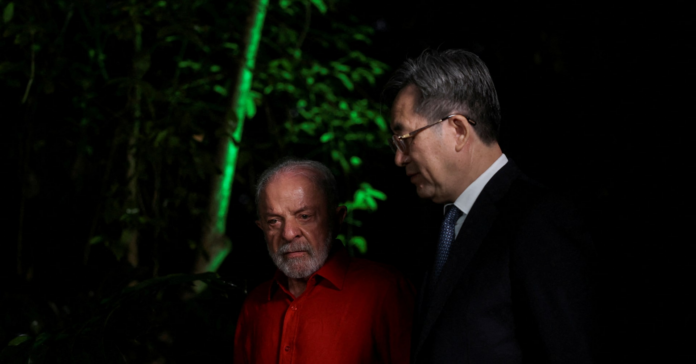BELEM, Brazil, Nov 11 (Reuters) – Countries trying to shift to clean energy while also preparing for extreme weather and other impacts in a warmer world will need money – a lot of it. As the costs and risks of global warming escalate, the topic of climate finance has become more tense. Here’s what you need to know:
WHAT IS CLIMATE FINANCE?
This describes all funding from governments, development banks, private investors and philanthropies aimed at helping countries cut greenhouse gas emissions or adapt to climate impacts, for example through projects in renewable energy or for flood defenses.
Sign up here.
WHY DOES IT MATTER?
Without climate finance, poorer countries will struggle to decarbonize their economies and protect vulnerable populations. Because these countries contributed the least in emissions, the 1992 U.N. climate treaty determines they should carry less of the burden of addressing the problem today.
Climate finance has become a litmus test for trust in international climate negotiations, with the amount committed by wealthy countries seen as a measure of their seriousness about addressing the crisis.
WHAT ARE THE MAIN DISPUTES?
Countries today disagree about who should pay climate finance, how much is needed and how it should be distributed. Historically, only industrialized countries like the U.S., Japan and nations in Europe have contributed, but pressure is mounting on fast-developing, high-polluting countries such as China, India and the Gulf states to pitch in.
Beijing insists it should continue to be treated as a developing nation under the U.N. climate treaty.
WHICH GOALS HAVE BEEN SET AND MET?
The world set its first climate finance targets in 2009, with wealthy countries pledging $30 billion annually. They increased that in 2010 to $100 billion by 2020, but did not meet the full annual amount until 2022.
Separately, multilateral development banks said they channeled some $137 billion in climate finance in 2024. About 62% of that, or $85.1 billion, went to low- and middle-income countries. A year earlier, the banks had put about $125 billion into climate finance.
Last year’s COP29 agreement combines those two donor groups in setting a new $300 billion annual target to be met by 2035. Between now and 2035, the target is assumed to remain at the previous $100 billion level, though this is not spelled out in U.N. documentation.
HOW MUCH MONEY IS INVOLVED?
Climate funds from wealthy governments are increasingly serving as seed money for rising flows of private capital toward climate-friendly investments.
For developing countries, nations at COP29 in Baku agreed to work on boosting annual funding to at least $1.3 trillion, with dozens of finance ministers producing a



